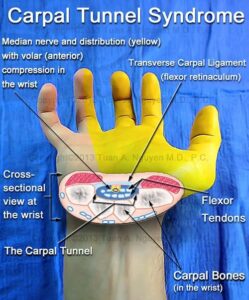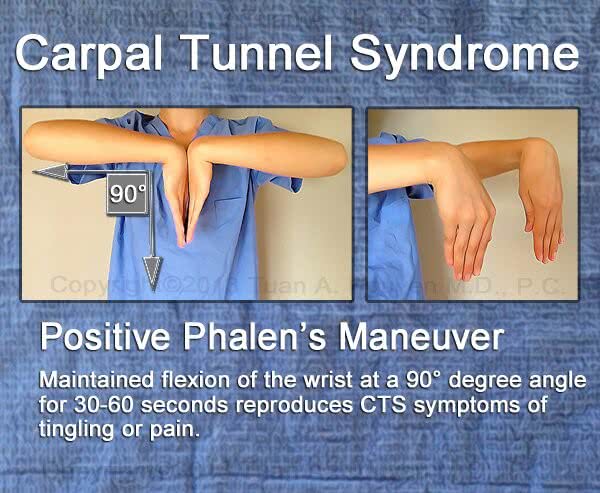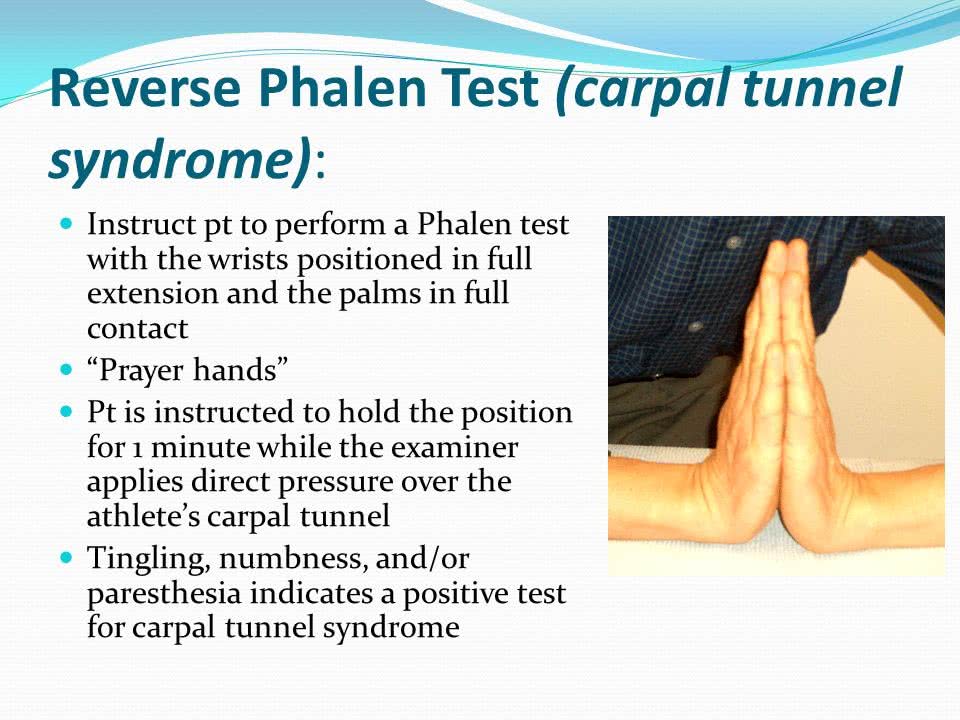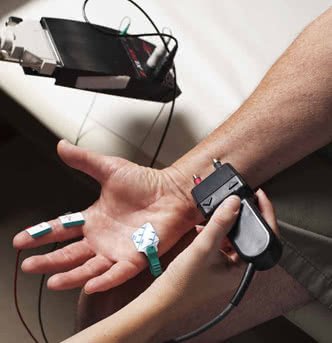Carpal Tunnel Test & Non-Invasive Care at CSC
A carpal tunnel syndrome is a prevalent condition affecting many individuals, leading to sensations such as numbness, tingling, or weakness in the hand and wrist. A carpal tunnel test is essential in identifying the underlying causes of these symptoms. At Chiropractic Specialty Center® (CSC), we emphasize the importance of accurate assessments to determine the most appropriate non-invasive care strategies.
Our approach integrates chiropractic, physiotherapy, and rehabilitation techniques to address the root causes of carpal tunnel syndrome. By focusing on gentle, non-rotatory methods, we aim to restore function and improve quality of life without resorting to surgical interventions. Understanding the significance of early detection and comprehensive care can make a substantial difference in managing and mitigating the effects of carpal tunnel syndrome.
Top 3 Insights on Carpal Tunnel Tests & Care
Understanding carpal tunnel syndrome and its management is important in providing appropriate care. Here are the top three insights:
- Comprehensive Testing is Crucial: Accurate diagnosis through tests like Tinel’s, Phalen’s, and nerve conduction studies ensures targeted care.
- Non-Invasive Care Options: Chiropractic, physiotherapy, and rehabilitation are non-invasive care options that focus on addressing underlying causes, often used as alternatives to surgery.
- Early Intervention Matters: Prompt assessment and care can prevent progression and improve outcomes.
By prioritizing these aspects, individuals can navigate their journey towards improved hand and wrist function with confidence.
Contact Us for a Comprehensive Carpal Tunnel Assessment
If you’re experiencing symptoms associated with carpal tunnel syndrome, it’s essential to seek a thorough evaluation. At Chiropractic Specialty Center®, our team is dedicated to providing non-invasive, integrative care tailored to your needs. By combining chiropractic, physiotherapy, and rehabilitation, we aim to address the root causes of your symptoms.
Don’t let discomfort hinder your daily activities. Contact us today to schedule a comprehensive assessment and explore the most suitable care options for you. Your journey towards improved hand and wrist health starts here. Contact Us
Why You Need A Carpal Tunnel Test
A carpal tunnel test is a vital step in understanding the cause of discomfort and sensations related to carpal tunnel syndrome. Accurate testing ensures that the care provided is focused on addressing the root of the issue. A comprehensive evaluation, along with appropriate assessments, is key to implementing the right care program. In this section, we will outline the procedures and methods used during the carpal tunnel test, as well as a simple assessment you can perform at home.
Why Do the Wrist & Fingers Feel Different or Experience Numbness?
Carpal Tunnel Syndrome (CTS) is marked by sensations such as numbness, tingling, burning, or weakness in the wrist and hand. The feeling of pins and needles is common and typically affects the thumb, index finger, middle finger, and part of the fourth finger. These sensations result from repetitive activities that increase pressure on the wrist’s sensitive nerves.
In more severe cases, the sensations may extend into the wrist and forearm. Shaking the hand may temporarily relieve these feelings. Conditions like diabetes, rheumatoid arthritis, and pregnancy can increase the likelihood of experiencing CTS-like symptoms. For many expectant mothers, CTS is as common as other types of discomfort during pregnancy. Carpal tunnel syndrome is just as common as is back discomfort during pregnancy in expecting mothers.
CTS happens when nerves controlling the wrist, hand, and fingers experience irritation. The median nerve travels through a passage called the carpal tunnel before reaching the hand. This passage, located on the palm side of the wrist, is surrounded by small bones and the flexor retinaculum, a fibrous structure that covers the tunnel.

Flexor Retinaculum, Wrist Sensations & CTS Assessment
The flexor retinaculum (also known as the anterior annular ligament or transverse carpal ligament) arches over the wrist bones, providing help for tendons that allow movement in the hand, wrist, and fingers. Nine tendons, including the flexor digitorum profundus, along with blood vessels and the median nerve, pass through the carpal tunnel.
Repetitive hand movements, trauma, or extended wrist positions can irritate the flexor retinaculum or the tendons within the carpal tunnel. This irritation can lead to thickening of the ligaments and tendons, a condition called hypertrophy. Hypertrophy of the flexor retinaculum or tendons is a leading cause of discomfort, numbness, or burning sensations in the wrists or fingers.
To properly assess CTS, a careful evaluation of the flexor retinaculum is crucial. If you are experiencing symptoms of CTS, it’s important to seek timely assessments to guide the appropriate care plan. In the next sections, we will explain the tests that help evaluate the flexor retinaculum’s role in CTS.
What Is the Wrist Exam You Can Do at Home?
This section will cover basic assessments that you can perform at home to better understand wrist conditions. While these self-assessments can provide useful insights, please remember that only a professional clinician can accurately assess your condition. If you suspect carpal tunnel syndrome, a full examination by one of our clinicians is required. Below are some common tests that are used to assess the entrapment of the median nerve:
- Tinel’s Test or Tinel’s Sign
- Phalen’s Test
- Reverse Phalen’s Test
- Pinch Test
Remember that these home tests are not meant for self-diagnosis but rather to help you understand your wrist condition more clearly.
Tinel’s Test or Tinel’s Sign: A Simple Test for Wrist Symptoms
Tinel’s Test involves gently tapping the palmar side of your wrist, where the median nerve passes through the carpal tunnel. This test is used to determine if tapping increases pressure within the carpal tunnel. If the test is positive, you may experience sensations such as tingling, numbness, or burning radiating into the fingers or hand. These symptoms are typical of carpal tunnel syndrome.
Phalen’s Test: A Simple and Efficient Wrist Assessment

Phalen’s Test is performed by flexing the wrist to about 90 degrees and holding the position for one minute. This maneuver reduces the carpal tunnel’s size and increases pressure on the median nerve. If symptoms like numbness, tingling, or discomfort are felt, this indicates a positive Phalen’s Test, suggesting carpal tunnel involvement.
Reverse Phalen’s Test: A Useful Test for Wrist and Hand Conditions

In Reverse Phalen’s Test, you extend the wrist to about 90 degrees and hold the position for one minute. A positive test is indicated if symptoms such as numbness, tingling, or burning sensations occur in the hand or fingers. While this test may irritate a sensitive median nerve, it’s important to note that it’s typically asymptomatic in healthy individuals.
Pinch Test: A Quick Way to Assess for Carpal Tunnel Syndrome
The Pinch Test involves pinching an object between your thumb and index finger. If you have difficulty pinching or holding an object, it could suggest weakness related to carpal tunnel syndrome. A positive test may indicate potential issues with nerve function.
Clinical Tests to Identify the Actual Cause of Your Wrist or Hand Symptoms

Carpal tunnel syndrome (CTS) occurs when the median nerve becomes irritated or malfunctions. The most efficient way to assess the health of the median nerve involves performing a nerve test.
Nerve conduction studies are commonly used for evaluating carpal tunnel syndrome. These tests are conducted by neurologists, who specialize in nerve conditions but do not perform surgeries themselves. Often, however, neurologists may refer patients for surgery, despite the fact that surgical options for CTS have not consistently yielded favorable outcomes. Therefore, we strongly recommend seeking non-invasive options first. Before discussing potential options for relieving carpal tunnel syndrome, let’s take a closer look at the nerve conduction test and other diagnostic assessments typically used by neurologists.
Nerve Conduction Testing for CTS
Nerve conduction tests are variations of electromyography (EMG), where electrodes are placed on the skin to assess the function of the median nerve. A mild electrical impulse is passed through the nerve to measure its response. If the median nerve is damaged or irritated, the conduction speed will be slower, confirming a CTS diagnosis.
Can You Get CTS-Like Symptoms from a Slipped Disc?
Yes, it is possible to experience symptoms similar to carpal tunnel syndrome from a slipped disc in the neck. The median nerve, implicated in carpal tunnel syndrome, is part of the brachial plexus, a network of nerves formed by the spinal segments C5-C6 or C6-C7, and T1. A slipped disc or other misalignments in the neck can compress these nerve roots, causing CTS-like symptoms in the wrist, hand, and fingers.
A pinched nerve in the neck can radiate discomfort through the neck, upper back, shoulders, wrists, hands, and fingers. Tingling, numbness, and burning sensations are common, similar to carpal tunnel syndrome. It’s important, therefore, to rule out other conditions, such as slipped discs, when diagnosing carpal tunnel syndrome.
What Are Other Structures Assessed in a CTS Examination?
Evaluating carpal tunnel syndrome involves a thorough assessment of not only the wrist and hand but also the elbow, shoulder, and neck. Conditions like impingement syndrome in these areas can mimic or contribute to symptoms similar to carpal tunnel syndrome.
It is common for people with CTS to have neck and upper back issues, which may also involve compression in the muscles of the neck and chest, causing additional problems. This condition, known as Thoracic Outlet Syndrome, can aggravate or even lead to carpal tunnel-like symptoms.
Thus, a proper diagnosis involves assessing multiple areas of the body, not just the wrist. A slipped disc or misalignment in the neck can compress nerve roots responsible for wrist function, so addressing all contributing factors is key for comprehensive recovery.
Why Should Your Shoulders, Arms & Elbows Be Thoroughly Assessed If You Experience Sensations of Numbness or Tingling?
Shoulder, arm, and elbow conditions, such as bursitis and tendon issues, can lead to sensations of numbness or tingling in the extremities. Repetitive stress or injuries to the elbow can put additional pressure on the median nerve, as seen with conditions like golfer’s elbow or tennis elbow. Earlier, we discussed how the median nerve is part of the brachial plexus. This nerve can also be compressed along its path through the neck, shoulders, elbows, or forearm as it travels toward the wrist. Compression at any of these areas may lead to symptoms such as numbness or tingling in the wrist, mimicking or contributing to carpal tunnel-like sensations.
Comprehensive Assessments by Our Experts
If you’re experiencing sensations like tingling or numbness in your wrist, it’s crucial to consider all possible sources of compression along the nerve’s path. The clinical teams at Chiropractic Specialty Center® are skilled in assessing and addressing these issues without the need for surgery. Our experts utilize non-invasive methods that help identify and resolve the root cause of your symptoms, offering efficient solutions to restore function and comfort.
Our integrated care approach, combining the expertise of both chiropractors and physiotherapists, enables us to deliver care that others may not provide. This collaborative approach ensures higher success rates, giving you the comprehensive care you need to recover fully.
What Should You Do with a Carpal Tunnel Syndrome Concern?
Opting for surgery may not be your only choice, as it often leads to complications like excessive scar tissue, which can worsen carpal tunnel syndrome. Instead, consider non-surgical, conservative approaches for managing carpal tunnel syndrome.
Physical therapy (physiotherapy) can provide benefits, but the impact of this care is even greater when combined with integrated clinical chiropractic methods. At Chiropractic Specialty Center® (CSC), our integrated approach of physiotherapy and chiropractic care is designed to address both immediate symptoms and long-term comfort. The technologies used at our center can significantly accelerate your recovery process.
For carpal tunnel syndrome, our most efficient physiotherapy devices include High-Intensity Laser Therapy (HILT) and shockwave therapy. These therapies are utilized at our Kuala Lumpur chiropractic center to promote faster healing. In addition, wrist splints and Cryotherapy (icing) can help reduce inflammation in the wrist. Our clinical teams will provide you with the appropriate wrist splints and detailed home care instructions to help your recovery.
Wrist exercises, specifically targeted at the carpal tunnel, are also an essential part of your rehabilitation. However, it’s important that these exercises be focused and precise to ensure maximum benefit.
CSC offers a comprehensive, non-invasive program for addressing carpal tunnel syndrome, focusing on fixing the root cause of your discomfort. Contact one of our centers today to learn more about the carpal tunnel test and holistic care solutions that can help you recover without injections or surgery.
Author: Yama Zafer, D.C. – Carpal Tunnel Test & Non-Invasive Care Options
Yama Zafer, D.C., with an educational background in physiotherapy and chiropractic from Cleveland Chiropractic University in Kansas City, has dedicated nearly three decades to the fields of physiotherapy and chiropractic. Read more about Y. Zafer.
Peer-Reviewed Medical References
- Genova A, Dix O, Saefan A, Thakur M, Hassan A. Carpal Tunnel Syndrome: A Review of Literature. Cureus. 2020;12(3):e7333.
- Ünver S, Akyolcu N. The Effect of Hand Exercise on Reducing the Symptoms in Hemodialysis Patients with Carpal Tunnel Syndrome. Asian J Neurosurg. 2018;13(1):31–36.
- Kim SD. Efficacy of tendon and nerve gliding exercises for carpal tunnel syndrome: a systematic review of randomized controlled trials. J Phys Ther Sci. 2015;27(8):2645–2648.
- Talebi GA, Saadat P, Javadian Y, Taghipour M. Comparison of two manual therapy techniques in patients with carpal tunnel syndrome: A randomized clinical trial. Caspian J Intern Med. 2020;11(2):163–170.
- Park YD, Park YJ, Park SS, Lee HL, Moon HH, Kim MK. Effects of taping therapy for carpal space expansion on electrophysiological change in patients with carpal tunnel syndrome. J Exerc Rehabil. 2017;13(3):359–362.
- Palmer KT. Carpal tunnel syndrome: the role of occupational factors. Best Pract Res Clin Rheumatol. 2011;25(1):15–29.
- Kazuko Shem, Joseph Wong, Benjamin Dirlikov. Effective self-stretching of carpal ligament for the treatment of carpal tunnel syndrome: A double-blinded randomized controlled study. J Hand Ther. 2020;33(3):272–280.
Last Updated
Last updated on June 3, 2025: Carpal Tunnel Test & Non-Invasive Care at CSC


